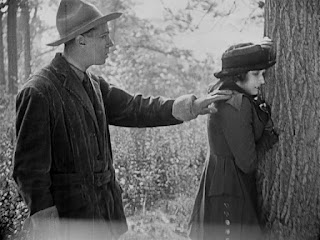THE WORLD, THE FLESH AND THE DEVIL
Written and Directed by Ranald MacDougall
Based on the novel by M.P. Shiel and the story by Ferdinand Reyher
Starring Harry Belafonte, Inger Stevens and Mel Ferrer
USA, 1959
Most of the fun I had with this movie came from the fact that I sat down to watch it not knowing anything about it other than the fact that it starred Harry Belafonte. So if you want to be as surprised as I was, stop reading. Otherwise...
The story starts with Harry Belafonte as a mine inspector who becomes trapped by himself underground for several days when a tunnel collapses on him. He's able to establish contact with the outside world through a phone that he can speak into, but cannot hear out of, and can tell from rapping on pipes and the sounds of machines digging that help is slowly but surely on its way. As he joked to himself and sang to himself to pass the time and ease his mind, I figured this would probably be the tale of the plight of blue collar workers or something like that. Maybe he'd get out and need medical help but the company won't pay for it so he has to file a lawsuit or something. That's how big my imagination is.
Well guess what? Instead, nuclear war happens while Belafonte's underground, and when he digs himself out, he finds that he just might be the last man on Earth. So, this blew my mind. I had no idea I was getting into a sci-fi movie, but I was so there for it. Belafonte makes his way to New York city, looking for other survivors, only to find none, and ends up setting up a home, generating electricity, and talking to department store mannequins. This might remind you of I AM LEGEND with Will Smith. That's what it reminded me of, anyway, and I always knew I AM LEGEND was based on the same book THE OMEGA MAN with Charlton Heston was based on, but I never once heard THE WORLD, THE FLESH AND THE DEVIL mentioned.
The key difference here is that there are no infected humans running around trying to eat Belafonte. He does meet a woman who has survived, however (Inger Stevens) and together they feel each other out, for an uneasy friendship and a tentative alliance. Belafonte monitors a radio and also creates broadcasts each day in the hopes that they'll find other survivors, but in the meantime the two form an almost idyllic domestic relationship, kept from being perfect only because of Belafonte's insistence at keeping Stevens at arm's length. When things come to a head, it becomes clear this is directly related to the fact that he is a Black man and she is a white woman -- under normal circumstances, he reasons, she'd have nothing to do with him, and would never think to even find out what kind of a person he is. She's oblivious to that because of her privilege, and can't understand the gulf between them in an intellectual sense, though she understands it's there, emotionally.
This has been a running theme in a few of Belafonte's movies -- Belafonte either has a friendship or romance with a white character who doesn't even realize race might be an issue. It doesn't enter their minds, because their privilege blinds them. Eventually they do something insensitive, and Belafonte has to either put up with it, or try to educate them on what's going on, and it usually falls on deaf ears. To see this dramatized in movies of the 50s is both way ahead of its time and also sadly the same thing that is still going on today.
In any case, back to the movie -- Mel Ferrer eventually shows up as a third survivor and the question of which of the two men is going to get to "have" the woman comes into play. Belafonte's more than willing to not get involved, but both of the other characters push things until the situation has to be addressed. I'll leave it to you to find out what happens next.
This was a great, suspenseful and exciting movie where I never knew what was going to happen next. All of the scenes of abandoned traffic jams, frozen on freeways and bridges, and abandoned parts of normally bustling New York are really effectively evocative and memorable.



























